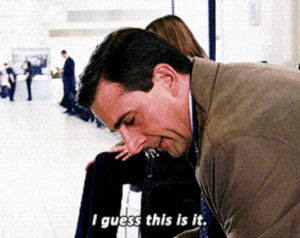This past week I came across what I think is an incredible insight on financial bubbles:
“Assets whose prices more than double over one to three years are twice as likely to double again in the same time frame as they are to lose more than half their value.”

For those who may be unfamiliar with such investing lingo, let’s unpack this statement starting with the basics.
A bubble is an economic term used to describe an asset skyrocketing in price and then crashing just as suddenly. The quick decrease in value is often referred to as “the bubble bursting.” The term bubble can be directed at a particular stock or asset class as well as the overall market.
People call out bubbles when they believe prices for a particular asset far exceed its fundamental value and the only reason for the price increase is exuberant market behavior.
Bubbles start to form when prices begin to increase, then as they rise, they gain momentum as people begin to take notice. This is when a narrative takes hold, like with the recent Gamestop saga, and all bets are off. Investors throw caution to the wind thinking this is their opportunity to get rich quickly.

Although, in order for it to be considered a bubble it has to pop at some point. The pop comes when people start taking profits by selling their positions which causes the price to drop. When the price starts to drop people panic, and just as momentum caused the price to increase rapidly, it also propels the rapid decline.
Here’s the problem, the only way to identify a bubble is in hindsight. Certain markets or assets may seem extremely overvalued, only to have their price continue to rise even higher.
For example, in early 2018 Tesla stock was considered overvalued and deemed a bubble because it was trading at a whopping $50 per share. Well, it’s now at $690. That’s a 1,280% return! The S&P 500 has also been considered overvalued for years now, meanwhile, it’s up 97% in the last 5 years.
This takes us back to the statement at the top. Yale’s William Goetzmann shares in his research that not only is it hard to predict bubbles but that they rarely actually happen. The majority of significant price increases in global markets were not followed by crashes.
“Assets whose prices more than double over one to three years are twice as likely to double again in the same time frame as they are to lose more than half their value.”
“The chances that a market gave back its gains following a doubling in value are about 10%.”
Some markets, like housing, cryptocurrencies, and stocks, seem to be particularly bubbly at the moment. Many people are hesitant to jump in because they’re worried about getting in at the wrong time. Are these markets poised for a drop? Or will they continue their current trend? Who knows.

Market commentators and brothers-in-law alike are always willing to sound the alarm of an impending market crash. But as Goetzmann’s research shows, it’s easy to call things a bubble but very hard to profit from them.
“Far more money has been lost by investors preparing for corrections, or trying to anticipate corrections, than has been lost in corrections themselves.” – Peter Lynch
Remember, pessimists may sound smart but optimists make money.
For long-term investors, you don’t need to try and time the market. You can, and probably should, ignore market conditions altogether and continue to invest based on your own risk profile and time horizon. Sometimes doing nothing is the right answer.
Financial decisions should be made based on your circumstances and life goals rather than what’s happening in the economy or the stock market.
Thanks for reading!

